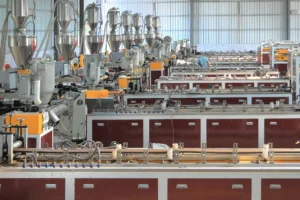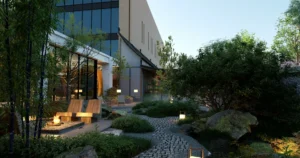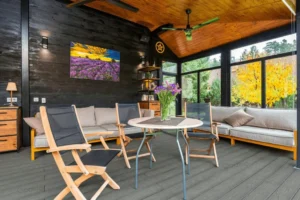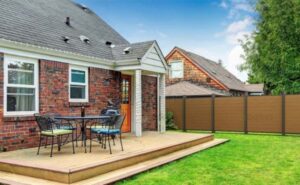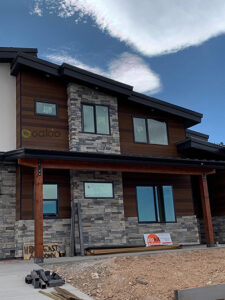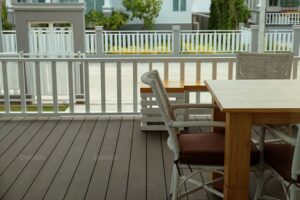What Is High-Strength, Lightweight WPC Materials?
Wood-plastic composite materials (WPCs) have become increasingly popular for construction and design, offering a unique blend of the aesthetics of wood and the durability of plastic. These materials are primarily made through the thermal processing of wood fibers combined with plastic polymers. WPCs boast several advantages, such as the natural look of wood, high hardness, resistance to termites, long-lasting durability, and recyclability. However, existing WPC products face some challenges, such as a significant reduction in toughness due to the reinforcement of the plastic base with wood fibers, increased moisture absorption, low durability, higher material density, and elevated production costs.
Introducing a New Lightweight, High-Strength WPC
To address these challenges, a new type of lightweight, high-strength WPC has been developed. This innovative material uses a combination of residual materials and advanced processing techniques to enhance performance while reducing weight and cost. The core layer of this composite is made from lightweight WPC, using waste materials from manufacturing processes. This approach not only cuts down on production costs but also reduces the overall weight of the material, making it more versatile in various applications.
The new composite material features a unique structure that includes two protective surface layers and a core made of a lightweight WPC and structural layers. These structural layers improve the mechanical performance of the material, while the surface layers help address the material’s aging issue, improving its durability.

Material Composition and Structure
The structure of this advanced WPC includes:
– First and Second Surface Layers: These layers are made from high-weather-resistance resins or resin-based composites, which include plant fibers, thermoplastic resins, coupling agents, and lubricants. These layers provide the material with enhanced durability and resistance to aging.
– Structural Layer: The structural layer includes fiber-reinforced materials or modified thermoplastic polymers. This layer not only provides mechanical support but also improves the bonding between the core and surface layers, resulting in better overall strength.
– Lightweight WPC Core Layer: The core layer uses processing residues such as bamboo powder, wood dust, straw, and white clay. This reduces weight and cost while maintaining the material’s overall integrity.
– Inorganic Fillers: The composite also includes inorganic fillers such as carbon nanotubes, nano-SiO2 particles, talc, and fiberglass, which further enhance the material’s strength and flexibility. The combination of these fillers allows for customization, ensuring the final material can meet various performance requirements.
Benefits of the New Composite
– Reduced Weight and Cost: By using waste products as raw materials for the core layer, the overall weight of the material is reduced, and production costs are lowered. This makes the material more affordable and efficient for large-scale applications.
– Improved Mechanical Properties: The structural layer enhances the composite’s mechanical performance, ensuring the material is strong yet flexible enough for use in a variety of environments.
– Better Durability: The new design addresses common issues like aging and moisture absorption, making the composite more durable in outdoor settings and harsh weather conditions.
– Environmental Benefits: The use of recyclable materials and waste products in the manufacturing process makes this composite an eco-friendly alternative to traditional building materials. It can be recycled after its life cycle ends, promoting sustainability.
Applications and Versatility
This lightweight, high-strength WPC is versatile and can be used in a range of construction and architectural applications, such as decking, cladding, and other decorative features. Its combination of strength, flexibility, and durability makes it an ideal material for both residential and commercial projects. Additionally, its customization options allow it to meet specific design and performance requirements, making it a popular choice for modern construction projects.
In conclusion, this new type of high-strength, lightweight wood-plastic composite represents the future of sustainable and efficient building materials. With its innovative structure and superior properties, it offers a highly competitive alternative to traditional construction materials, providing both aesthetic appeal and functional benefits.
Trending Reading
What Are the Differences Between the WPC Board and PVC Board?
[2024 Update] How Long Does WPC Decking Last?

